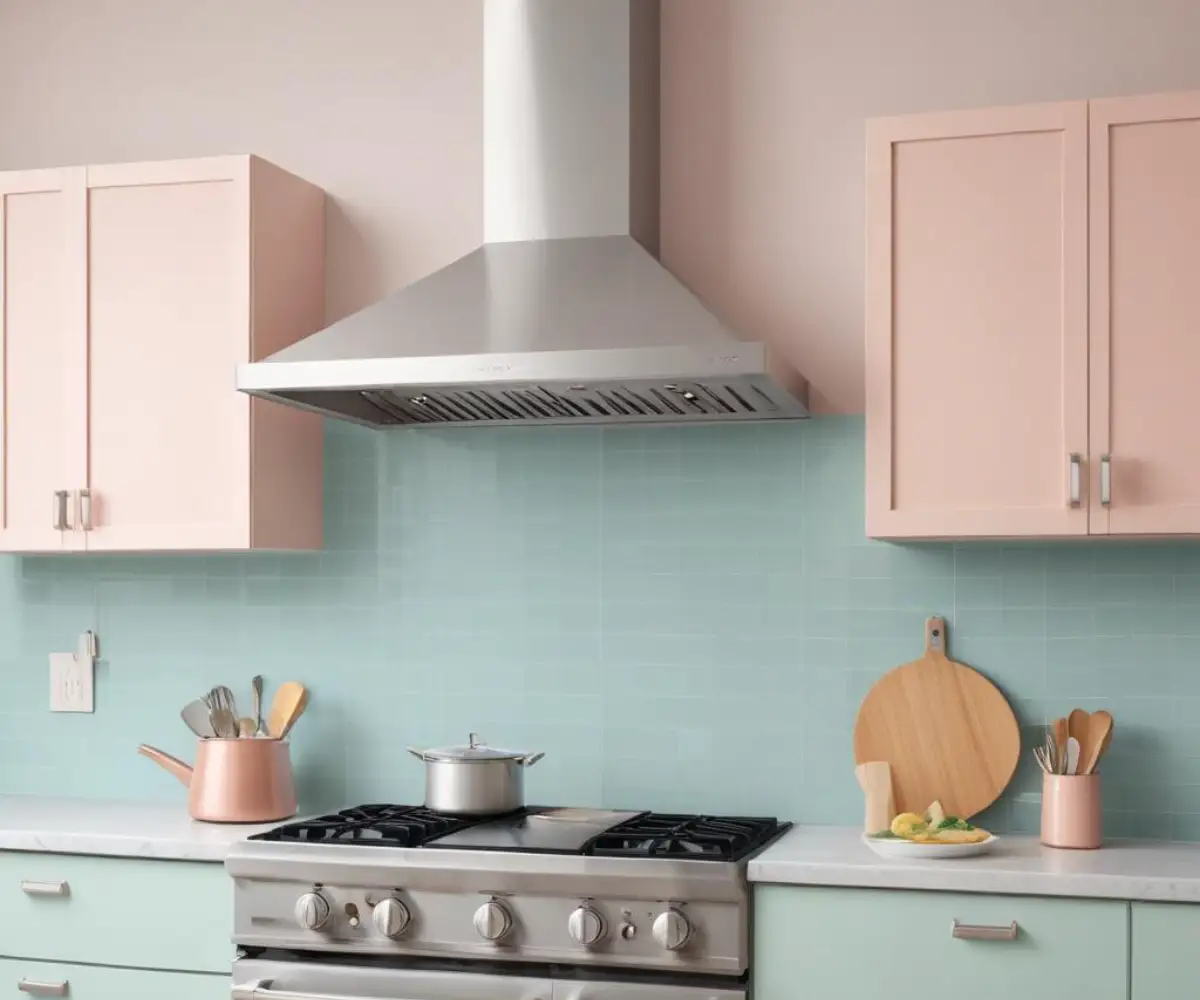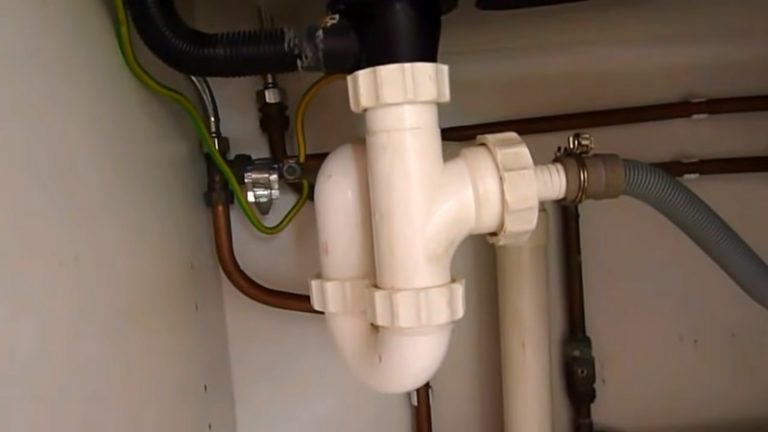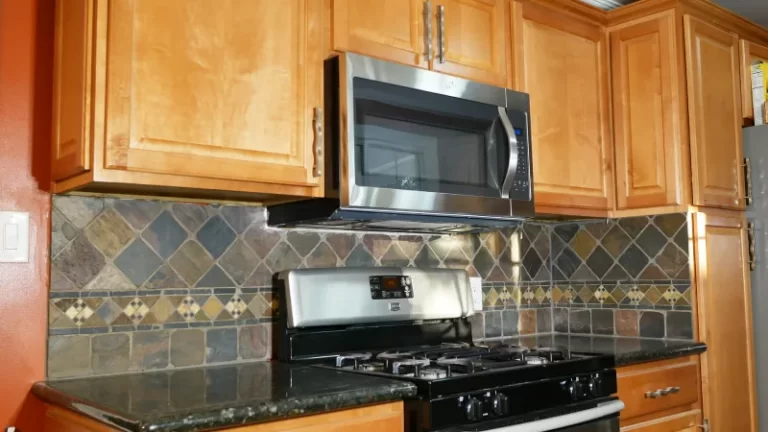Range Hood for Indian Cooking: Stop Grease & Odors for Good
Indian cooking is a feast for the senses, filled with aromatic spices, vibrant colors, and rich flavors. But the very techniques that create these incredible dishes, like tempering spices (tadka) and deep-frying, also create a formidable challenge in the kitchen: intense smoke, stubborn grease, and odors that can permeate your entire home.
Many standard range hoods simply aren’t built to handle this level of cooking. If you’re tired of the smell of last night’s curry lingering in your living room and a sticky film of grease coating your cabinets, you’ve come to the right place. The problem isn’t your cooking; it’s your ventilation.
You'll Learn About
Why Indian Cooking Demands a High-Performance Range Hood
The unique combination of high heat, oil, and potent spices in Indian cuisine creates a trifecta of ventilation nightmares. A weak or poorly designed range hood will fail, leaving your home feeling stuffy and unclean.
The Challenge of Intense Smoke and Grease
The sizzle of mustard seeds and cumin in hot ghee, known as tadka or tempering, is a cornerstone of many Indian dishes. This process instantly releases a large volume of smoke and atomized oil particles. Similarly, frying foods like pakoras, samosas, or puris generates significant amounts of grease-laden vapor.
Without powerful extraction, this vapor doesn’t just disappear. It cools and settles as a sticky, yellowish film on every surface in your kitchen, from cabinets and countertops to walls and ceilings. This buildup is not only difficult to clean but also a fire hazard.
The Battle Against Lingering Odors
The complex aromas of spices like turmeric, coriander, and garam masala are what make Indian food so beloved. However, these aromatic compounds are heavy and oily, allowing them to cling to fabrics, furniture, and even walls. A standard range hood might clear the smoke, but it often leaves these stubborn odors behind to linger for days.
Effective ventilation must capture these odor molecules at the source and completely remove them from your home. Recirculating systems that just filter and release air back into the kitchen are notoriously ineffective against these powerful smells.
The Ultimate Solution: Key Features Your Range Hood MUST Have
Choosing the right range hood is about understanding the science of air movement and filtration. For the demands of Indian cooking, certain features are non-negotiable. Think of it not just as an appliance, but as an essential ventilation system for your home.
1. Extreme Suction Power (High CFM)
CFM stands for “Cubic Feet per Minute,” and it measures the volume of air a range hood can move. This is the single most important factor for an Indian kitchen. A low-CFM hood (typically under 500) simply cannot create enough suction to capture the intense bursts of smoke and steam from your cooking.
For a gas cooktop, which is common for Indian cooking, you need a minimum of 900 CFM. For heavy frying and spice tempering, aim for 1200 CFM or even higher. This level of power ensures that smoke, grease, and odors are captured before they can escape into your home.
2. Superior Filtration: Baffle Filters are Essential
The type of filter in your range hood determines how effectively it traps grease. Most basic hoods use aluminum mesh filters, which clog quickly with the heavy grease produced by Indian cooking. Once clogged, they drastically reduce airflow and become a cleaning nightmare.
Stainless steel baffle filters are the professional’s choice and the best option for your kitchen. They work by forcing grease-laden air to change direction rapidly. The grease particles, being heavier than air, cannot make the sharp turns, so they condense and drip into collection trays. This design is far more effective at capturing grease and, crucially, maintains consistent airflow even as the filters get dirty. They are also durable and dishwasher-safe, making cleanup effortless.

3. Vented is Best: The Ducting Decision
You have two main choices for your range hood installation: ducted (vented) or ductless (recirculating). A ductless hood pulls air through a charcoal filter to “clean” it and then releases it back into the kitchen. For Indian cooking, a ductless hood is highly inadequate.
Charcoal filters become saturated with grease and odors very quickly and are expensive to replace. They cannot effectively remove the sheer volume of contaminants. A ducted system is the only real solution, as it physically transports the smoke, grease, steam, and odors completely outside your home, ensuring the cleanest possible indoor air.
4. Maximize Capture Area: Hood Size and Depth
To be effective, a range hood must be large enough to cover your entire cooking surface. The golden rule is that the hood should be at least as wide as your cooktop, and ideally 6 inches wider (e.g., a 36-inch hood over a 30-inch stove). This creates a larger capture canopy for smoke and steam.
Depth is equally important. The hood should be deep enough to cover the front burners, where much of the heavy cooking happens. A hood that only covers the back burners will allow a significant amount of smoke to escape into the kitchen.
Your Range Hood’s Secret Weapon: The Ductwork System
Even the most powerful, expensive range hood will fail if it’s connected to poor ductwork. The ducting is the highway that carries pollutants out of your home, and any bottlenecks will cause a traffic jam, reducing performance, and increasing noise.
Duct Size and Material Matter
The duct pipe’s diameter must match the size of the hood’s exhaust outlet, typically between 6 and 10 inches for high-CFM models. Using a smaller duct is like trying to breathe through a straw—it chokes the motor, drastically cuts down the effective CFM, and makes the fan work harder and louder.
When it comes to materials, avoid flimsy, flexible vinyl or foil ducts. Their ribbed surfaces create turbulence that restricts airflow and traps grease. The best choice is smooth, rigid metal ducting. If you need some flexibility for installation, you can learn more about how semi-rigid ducting provides a durable and efficient solution.
The Shortest, Straightest Path is Best
The ideal duct run is as short and straight as possible. Every foot of pipe and every bend (or elbow) adds resistance and reduces the hood’s power. A 90-degree elbow can be equivalent to adding 15 feet of straight pipe in terms of airflow resistance. Plan the most direct route from your kitchen to the outside.
Comparing Key Ventilation Features
Making the right choice can feel overwhelming. This table breaks down the most critical components and provides clear recommendations for a kitchen built to handle Indian cooking.
| Feature | Standard Hood Specification | Recommended for Indian Cooking | Why It Matters |
|---|---|---|---|
| CFM (Airflow) | 300-500 CFM | 900-1500 CFM | Provides the raw power needed to capture intense smoke, steam, and grease before they escape the cooktop area. |
| Filter Type | Aluminum Mesh | Stainless Steel Baffle | Baffle filters efficiently separate grease from the air without clogging, ensuring consistent airflow and easy cleaning. |
| Venting Type | Ductless/Recirculating Option | Ducted/Vented ONLY | Physically removes all pollutants, including stubborn odors and moisture, from your home for superior air quality. |
| Hood Width | Same as cooktop | Cooktop width + 6 inches | Creates a larger capture canopy, ensuring that smoke and steam from all burners are effectively drawn into the hood. |
| Duct Diameter | 4-6 inches | 8-10 inches | A wider duct provides an unrestricted path for air to travel, maximizing the hood’s performance and reducing noise. |
The Overlooked Factor: Makeup Air Systems
Here is a critical piece of information that is often missed. When you install a very powerful range hood (typically over 400-600 CFM, depending on local building codes), you are pulling a massive volume of air out of your house. In modern, tightly sealed homes, this can create a dangerous situation called negative pressure.
Negative pressure can cause “back-drafting,” where air is pulled back into the house through other vents, like your furnace or water heater flue. This can bring dangerous combustion gases, including carbon monoxide, into your living space. To prevent this, a Makeup Air System (MAS) is required. An MAS is a separate vent that actively brings fresh outside air into the home to replace the air being exhausted by the range hood.
Do You Need a Makeup Air System?
If you are investing in a high-CFM range hood suitable for Indian cooking, you almost certainly need to factor in a makeup air system. This is no longer an optional accessory; it’s a crucial safety component of a modern, high-performance ventilation system. Always check your local building codes and consult with an HVAC professional during your kitchen planning phase.
What About Over-the-Range Microwaves?
Over-the-range microwaves with built-in vents are popular space-savers, but they are a terrible choice for serious cooking. Their ventilation fans are extremely weak, typically rated at only 300-400 CFM. This is nowhere near powerful enough to handle the smoke and grease from Indian cuisine.
Furthermore, their small capture area and inefficient filters mean most of the pollutants will escape into your kitchen. If you cook Indian food regularly, you need a dedicated, high-power range hood. Correct installation height is also critical; if your over-the-range setup seems too low, it could be a safety issue as well as an ineffective ventilator. For a truly clean and safe setup, consider a dedicated circuit if you plan to hardwire your microwave or other powerful kitchen appliances.
Maintaining Your High-Performance Hood
Investing in the right range hood is the first step. Proper maintenance ensures it continues to protect your home and air quality for years to come. Fortunately, with the right features, it’s simple.
Clean your baffle filters regularly—at least once a month, or more if you do a lot of frying. Simply pop them out and run them through a dishwasher cycle or soak them in hot, soapy water. Keeping them clean ensures you are always getting maximum airflow and grease-capturing performance.
Conclusion: Reclaim Your Kitchen and Your Home
You don’t have to choose between cooking the food you love and living in a clean, fresh-smelling home. By choosing a range hood with the right specifications—high CFM, ducted venting, baffle filters, and proper sizing—you can create a kitchen environment that truly works. Understanding that this is an integrated system, including properly sized ductwork and a makeup air system, is the key to unlocking its full potential.
Stop scrubbing greasy cabinets and trying to air out lingering smells. Invest in a proper ventilation system and transform your cooking experience from a chore into a pure joy.


